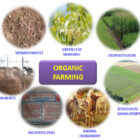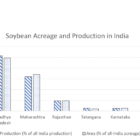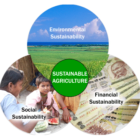Any form of agriculture interferes with nature. Cultivating land and growing crops involves using the natural resources and converting them into food or fibre. It is essential to cultivate land as there is no other way of feeding the population. However, while cultivating, if we keep the utilization of natural resources at the minimum level and use them in a sustainable way so that they are renewed frequently and are available for future use, we would be doing a great favour to our future generations.
What are the natural resources we are talking about? Soil and water are the most used resources in the cultivation of crops. Air is also used in a big way although it is not in a visible or measurable way. The land contains flora and fauna and the soil has organic matter that is essential for plant growth.
Sustainable Agriculture is farming in a sustainable fashion based on an understanding of the ecosystem and relationships between organisms and their environment. The three important parts of Sustainable Agriculture are (i) economic profit for the farmer and the others providing products and services to him (ii) environmental stewardship and (iii) social responsibility by all the stakeholders concerned. Even corporates nowadays are under pressure to look beyond short-term profits and ensure environmental sustainability and responsible social behavior.
It is very important to ensure that the farmer makes money while following sustainable agricultural practices. The farmer can make money only if he increases his yields, reduces his costs, and gets a better price for his produce. It would be futile to expect the farmer to follow sustainable practices if he is not making money.
– Ram Kaundinya
The writer is Director General, Federation of Seed Industry of India




